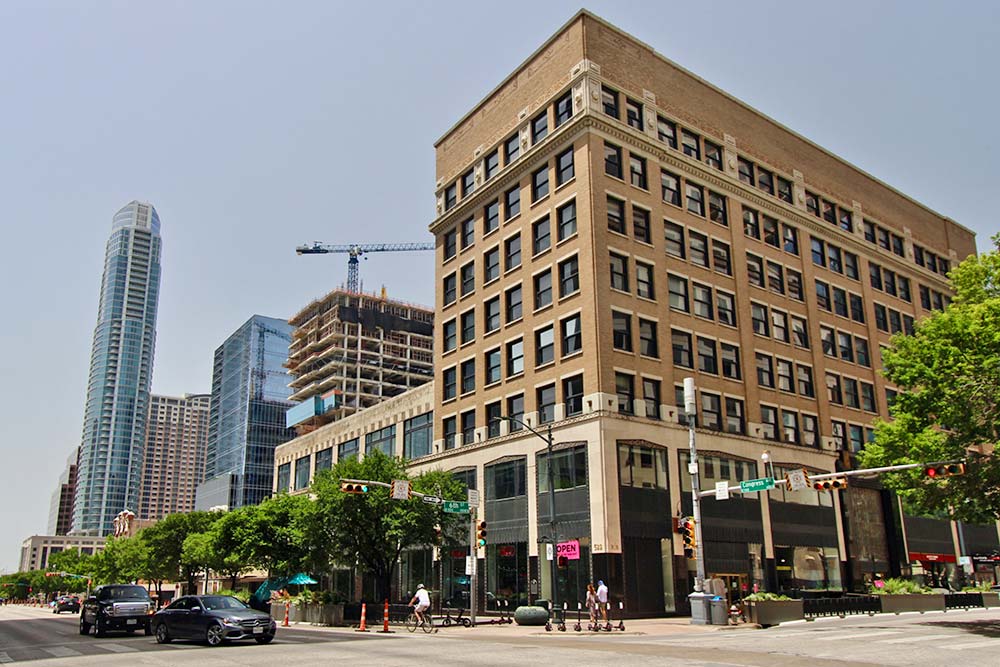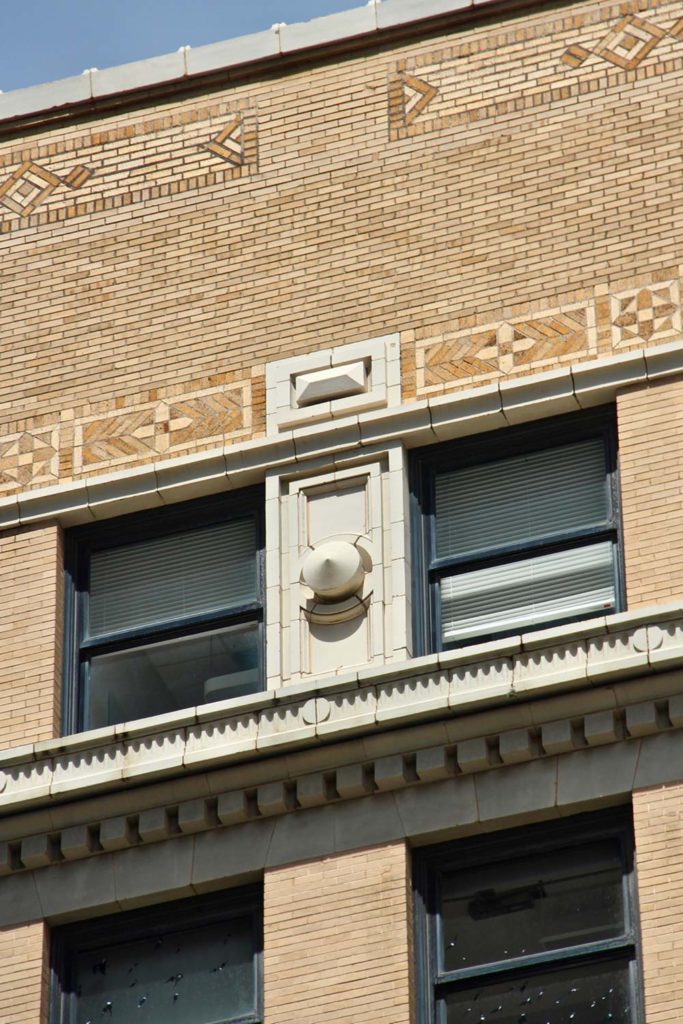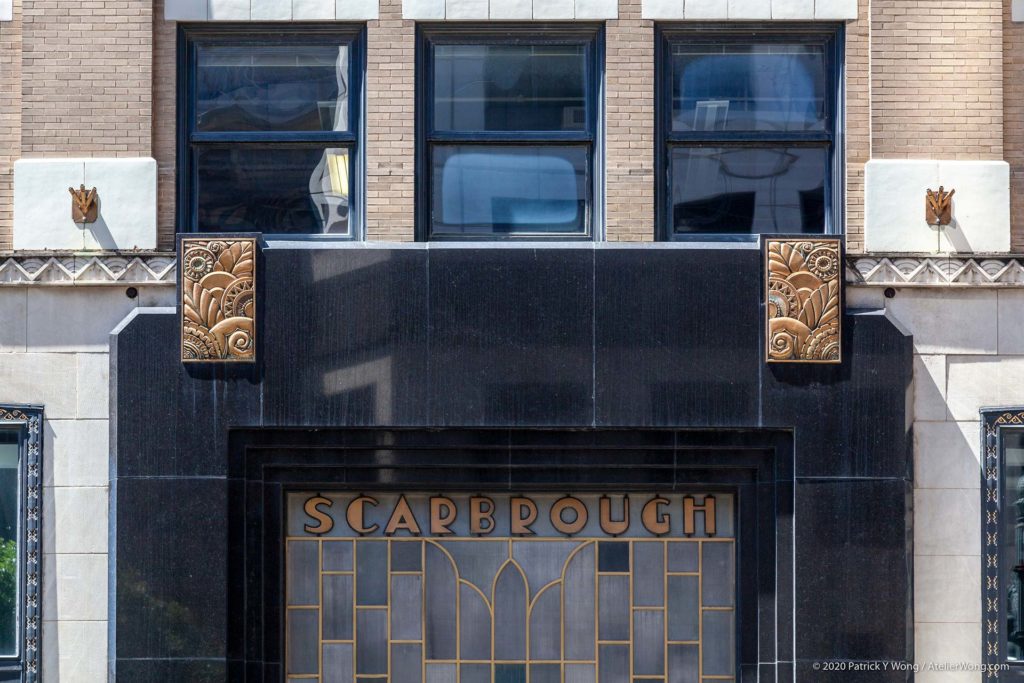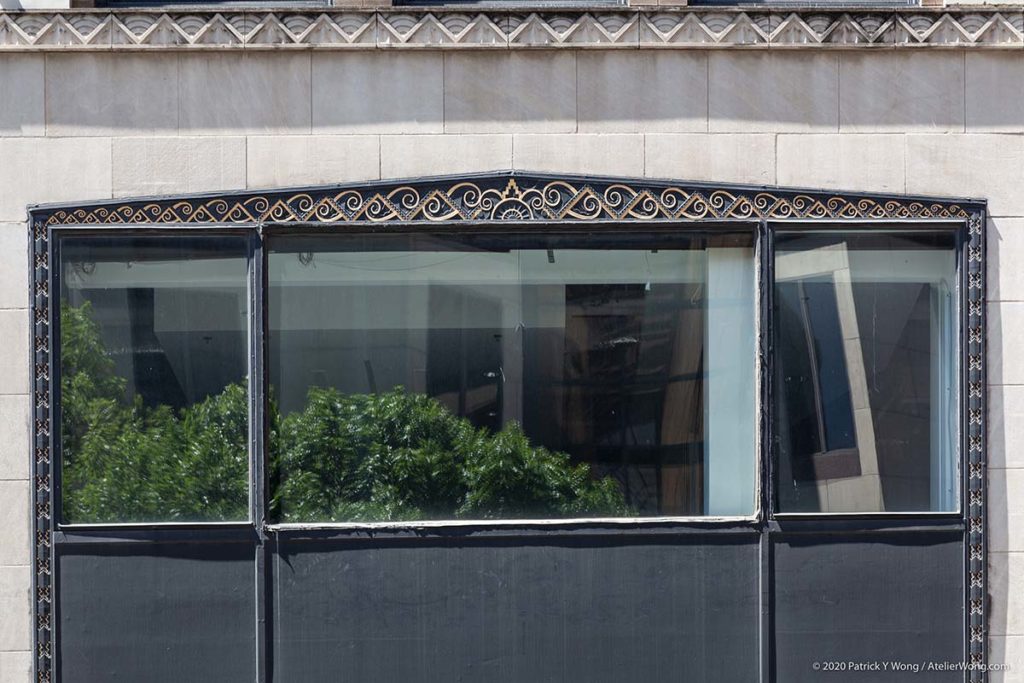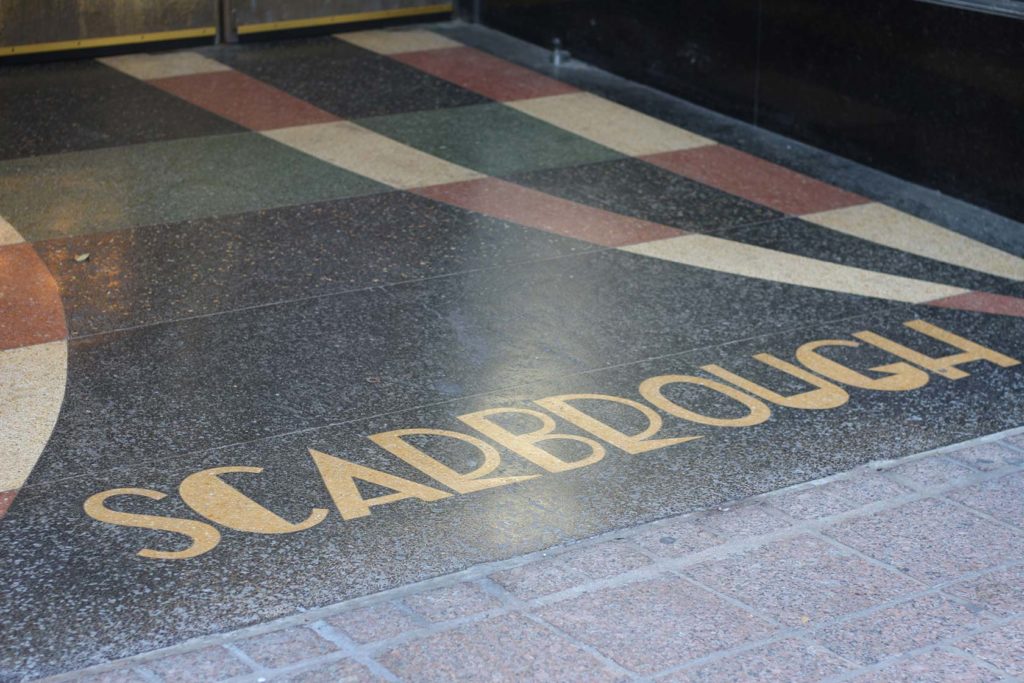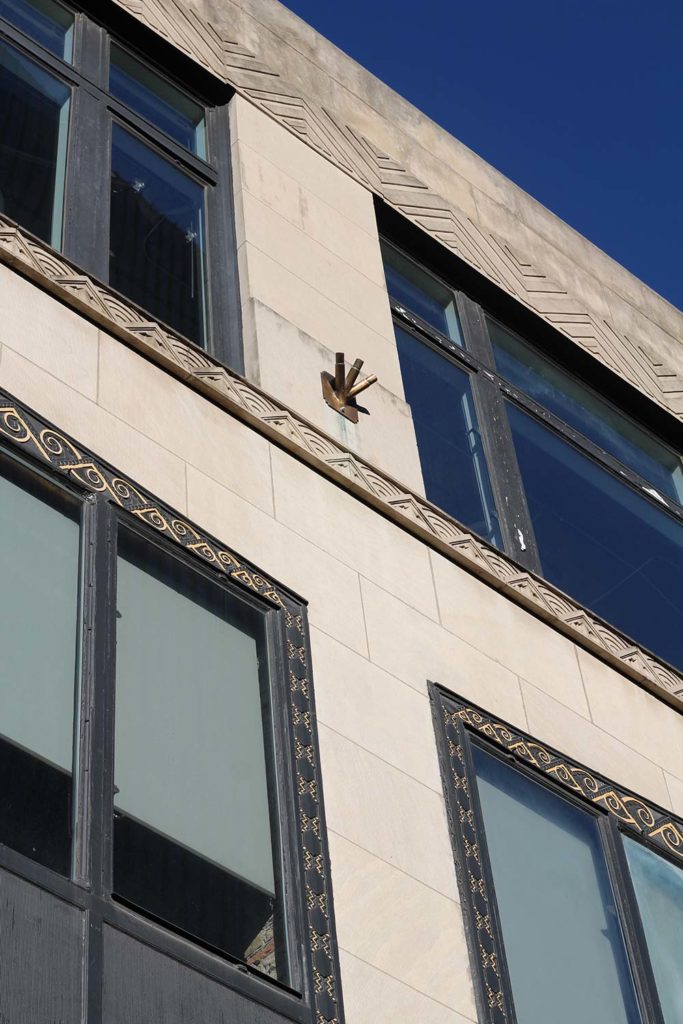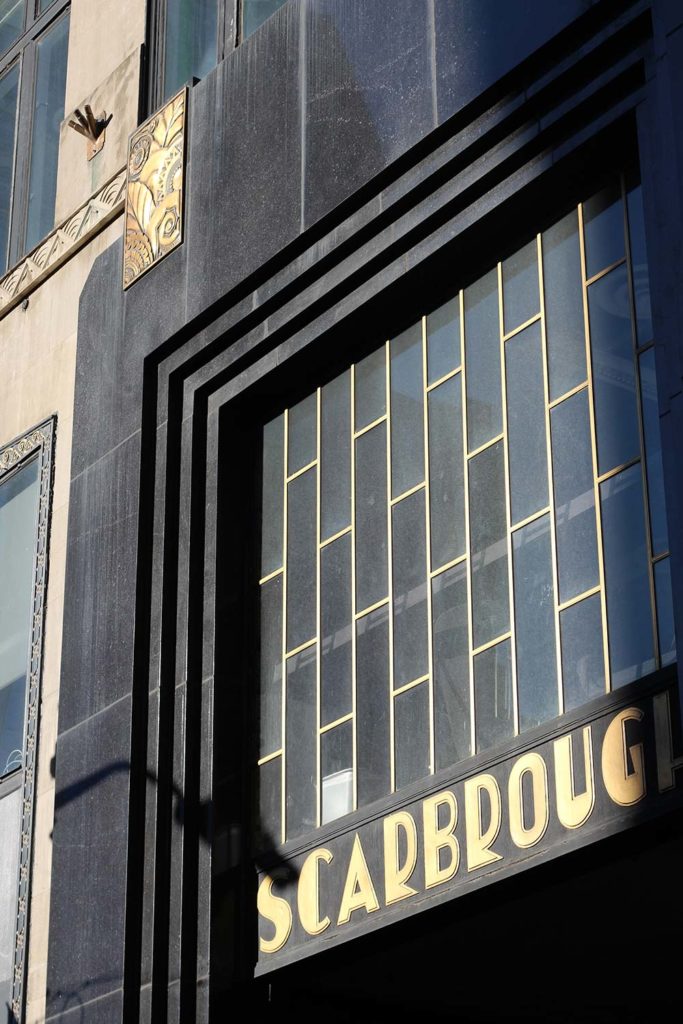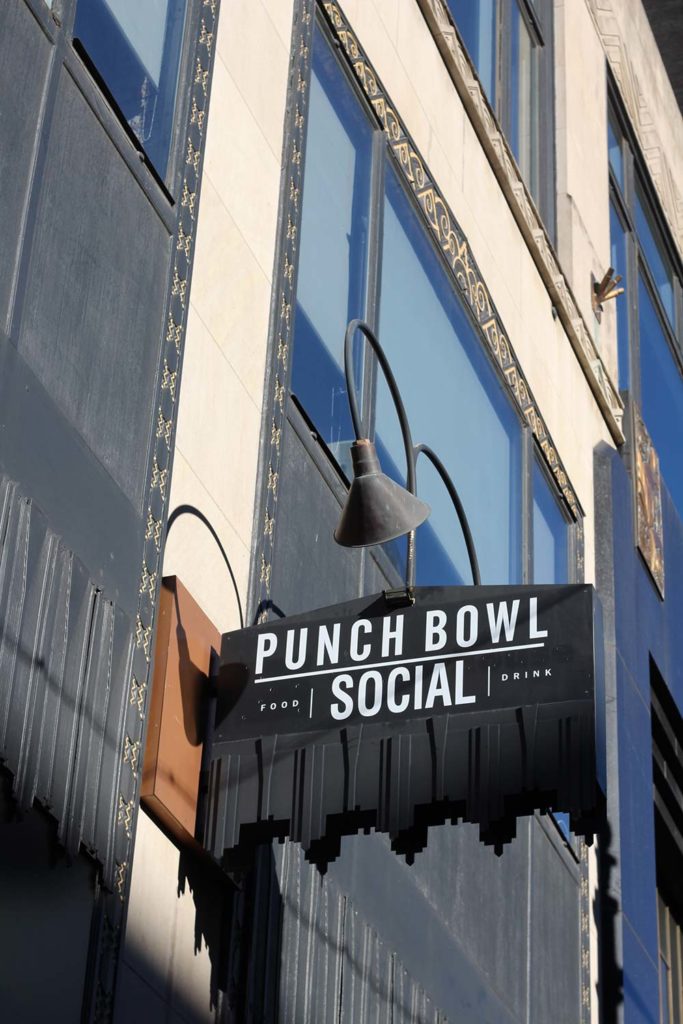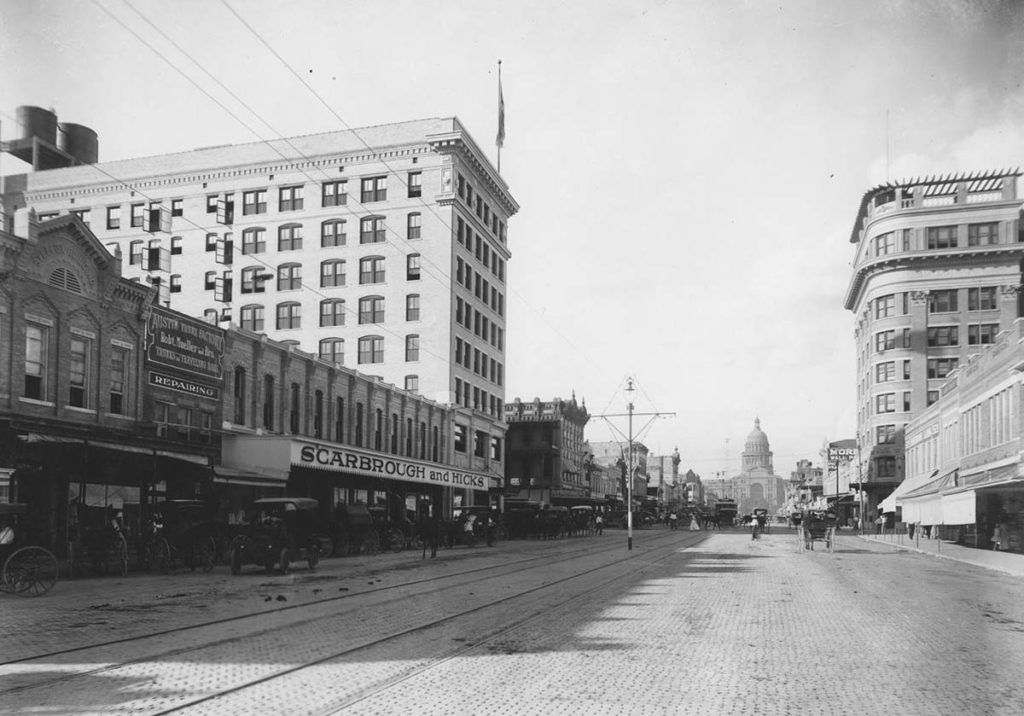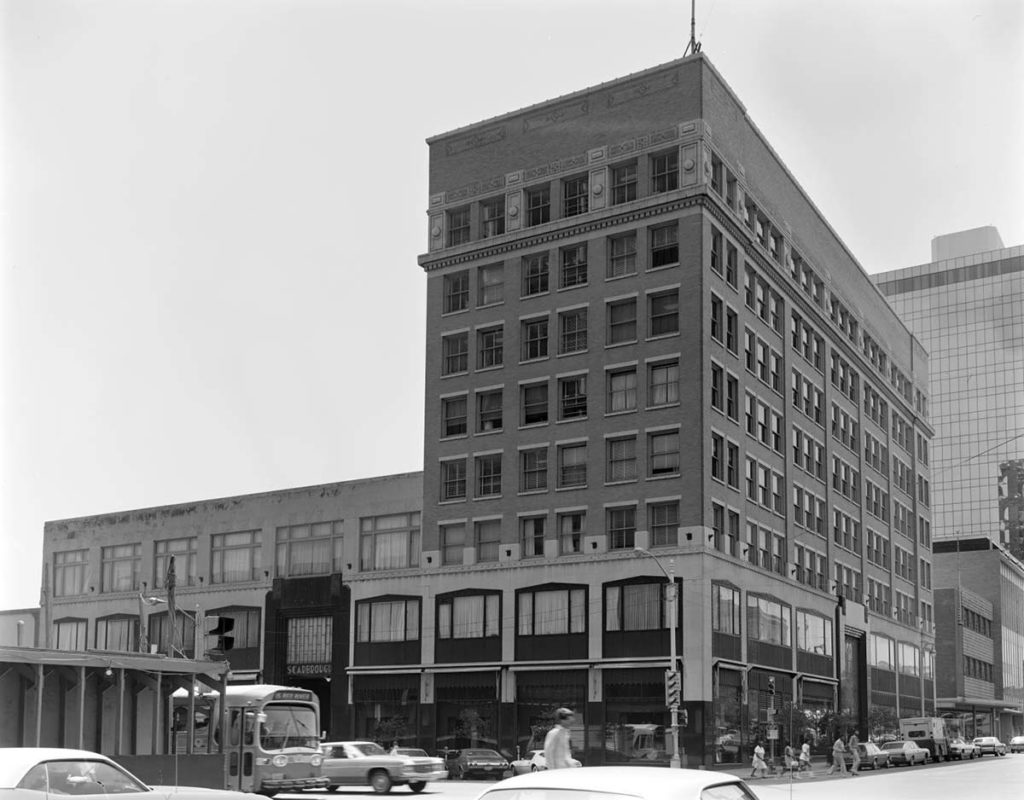The intersection of Congress Avenue and Sixth Street has been the symbolic heart of Austin since its inception, and the Scarbrough Building’s prime location reflected its role as the city’s premiere department store. Upon its completion in 1910, the 8-story building was the tallest in Texas. But the honor was short-lived, as businessman George Littlefield, determined to claim the title, added another story to his eponymous building on the opposite corner.
The Scarbrough Building was constructed by Alabama native Emerson Monroe Scarbrough, who first opened an outpost of his namesake department store on Congress Avenue in 1893. It is a rare Texan example of the Chicago Style (named after the earliest skyscrapers built in Chicago in the early 20th century), which is characterized by the use of masonry (brick, stone, and/or terra cotta) cladding over a steel frame and a tripartite arrangement that echoes the parts of a column: the lower floors form the base, the plain middle stories comprise the shaft, and the more decorative upper stories create the capital. During its construction, Austinites placed bets on whether the city’s first concrete-and-steel structure could even hold itself up.
A renovation in 1931 adopted the Art Deco style for the base, resulting in one of the most attractive façades in Austin. With a combination of limestone, jet-black granite, geometric gold accents, and artful stained glass, the double-height entrances and storefront windows would look right at home on Fifth Avenue in New York City. Following its renovation, Scarbrough’s became the first air-conditioned department store west of the Mississippi. At its zenith, the department store was a hive of activity, occupying 94,000 square feet on three levels.
Like many regional department stores across the nation, Scarbrough’s fell victim to the rise of suburban shopping malls, and the downtown location shuttered in 1982. After a string of unsuccessful tenants, the ground floor and basement are now occupied by a popular social club, while the upper stories house a mix of offices and tech startups. An Art Deco-inspired pocket patio enlivens the adjacent sidewalk, giving hope that this classic establishment will once again become a hub of commerce and camaraderie. – Bud Franck

